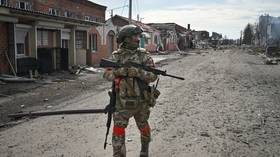No US shield – no Russian missiles in Europe
Russia’s Defence Ministry confirms Moscow will not place Iskander missiles in the Kaliningrad region near Poland. Previously, Russia intended to deploy them in response to US plans for its AMD shield in Eastern Europe.
Washington, however, has now dropped its Bush-era plans.
In a reciprocal move, Russia said it could abandon plans to deploy tactical missiles in its Baltic exclave in response to the US decision to drop its missile shield plans for Eastern Europe.
Russia’s Ministry of Defense said on Saturday that after the US reassessment of the anti-missile shield there is now no need for the stationing of an inventory of Iskander missiles in the country’s Kaliningrad Region.
What is particularly impressive is the speed at which the two superpowers changed their minds on this very controversial issue of the two missile-defense shield programs.
It was on Thursday that President Barack Obama announced his decision to scrap George W. Bush’s plan for a shield in Poland and the Czech Republic. It took barely 24 hours for a response from Moscow to scrap its own plans of setting up a missile-defense system in the western Kaliningrad region, which would have been squeezed between two EU and NATO members – Poland and Lithuania.
The Iskander missile has a range of 280 kilometers and constantly changes its trajectory in flight, which helps it penetrate the enemy’s air defenses. Each missile vehicle has two missiles that can be launched at different targets with a one minute interval.
Meanwhile, Anders Fogh Rasmussen said that a group of twelve NATO experts, headed by former US Secretary of State Dr Madeleine Albright, could have a meeting with Russian security specialists.
The group, appointed to lay the ground for NATO’s new Strategic Concept, is now considering a visit to Moscow for a discussion with Russian security specialists, Rasmussen noted. He stressed, however, that they work independently, so they will make the decision on that on their own. In addition, he pointed out that, in case they decide to do so, he would support that move.
The reasons for a major shift
The Obama administration says that the decision to change its plans on missile defense is not about making concessions to Russia or asking for concessions from Russia. Rather, it is based on a reassessment of global security threats, particularly those coming from Iran, which is something Russia has been calling on for years.
The report from US intelligence says the Iranian long-range missile program is progressing too slowly and is not dangerous at the moment, and the more immediate threat comes from Iran’s middle and short-range missiles.
Commenting on the decision of Obama’s administration, President Medvedev said “The fact that such signals are coming is very good. This shows that our American partners are at least willing to listen to Russia's reasoning and position. It shows they're willing to talk and take decisions aimed at easing the situation.”
Medvedev pointed out that “We were against the idea of a US missile shield in Eastern Europe from the very beginning. And if this idea is not realized in its original form – it would be very good for Europe and for Russian-American relations.”
Konstantin Sivkov, the Vice President of the Academy of Geopolitical Problems, says the prospects following the U.S. decision not to deploy missiles in Europe are not necessarily rosy.“The U.S. decision to drop its missile defense plans is positive. But it's not a breakthrough that gives the U.S. and NATO the right to demand military and technical concessions from Russia,” he said.
“One of the new radars and naval missile components could be set up in the Caucasus, anyway. Georgia has already agreed to host the radar. By temporarily dropping its missile shield, the U.S. is just trying to sell a dead cat for good money,” Sivkov said.
Change in mood in Poland
With the majority of European countries having reacted to Obama’s decision and the subsequent events with celebration, initial reports indicated a totally different mood in Poland, where the majority of its population was said to be in favor of the old proposals from the United States.
However, according to the most recent opinion poll taken in this country, where people were asked about what they think of the US decision to shelve the AMD system in Poland, almost half of all respondents – about 48% – answered it was good for their country, while 31% were in favor of the old shield plans.















